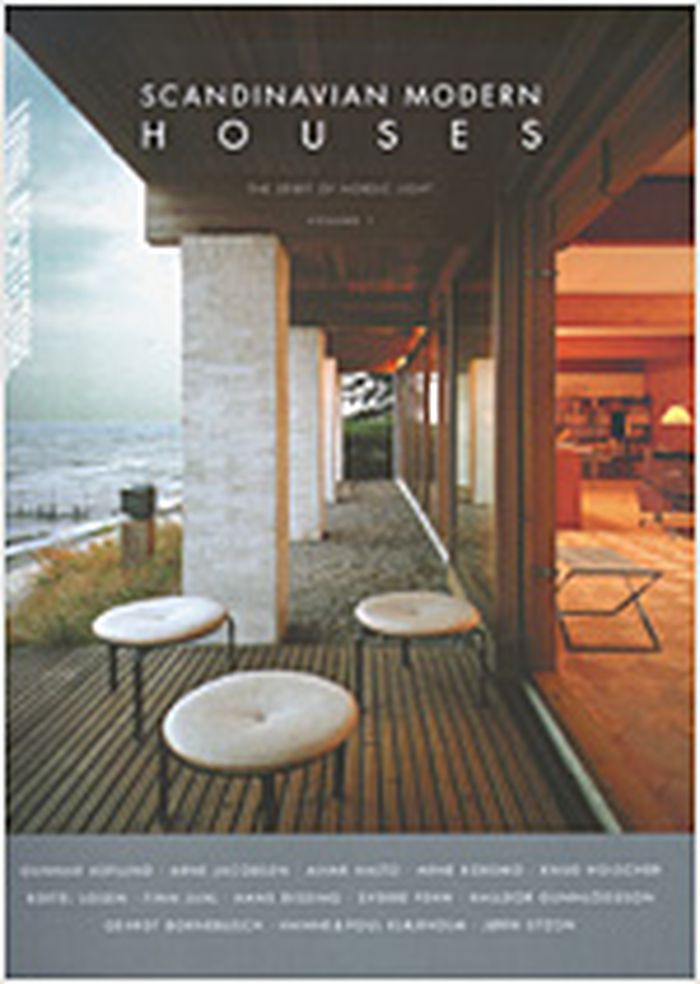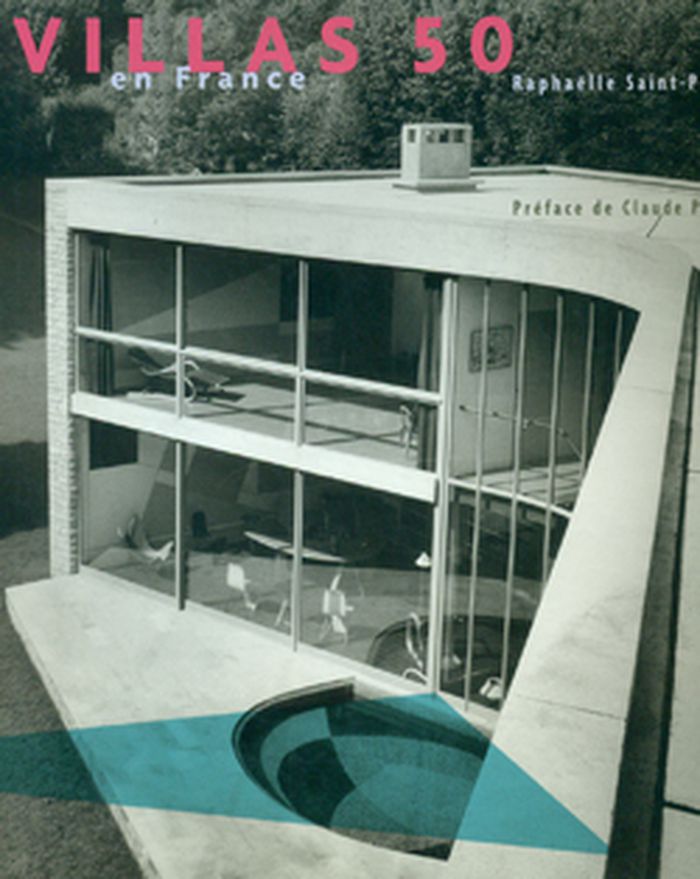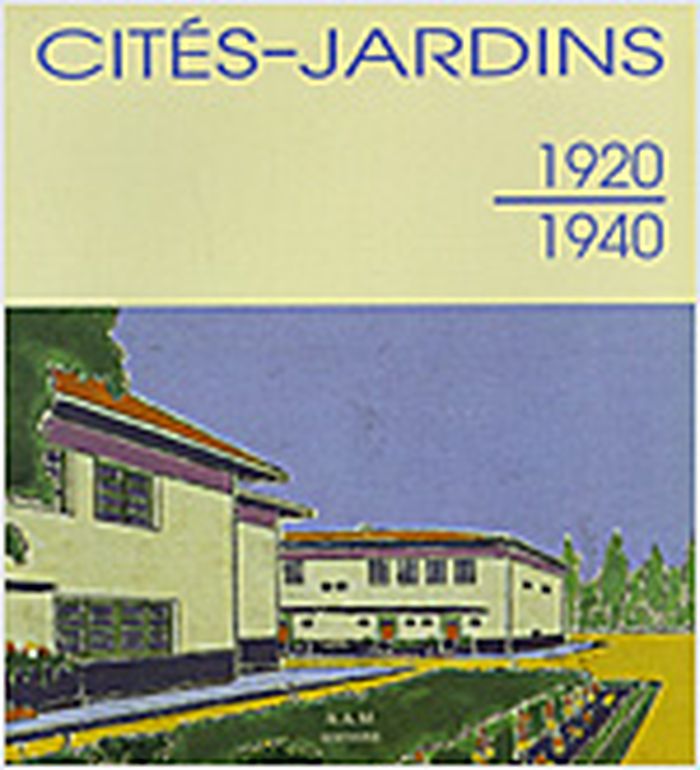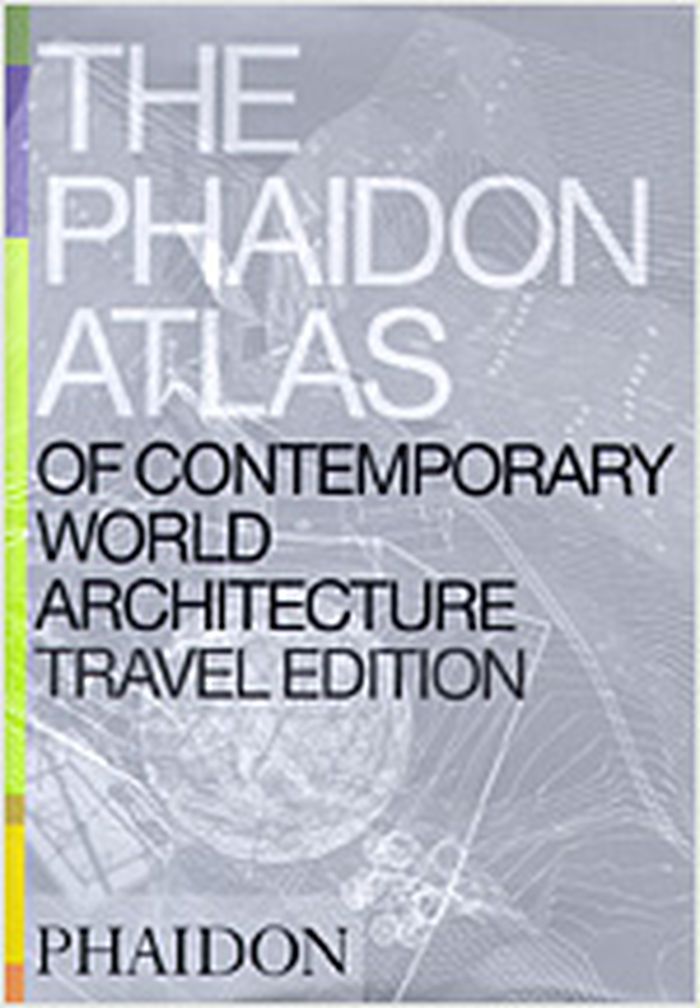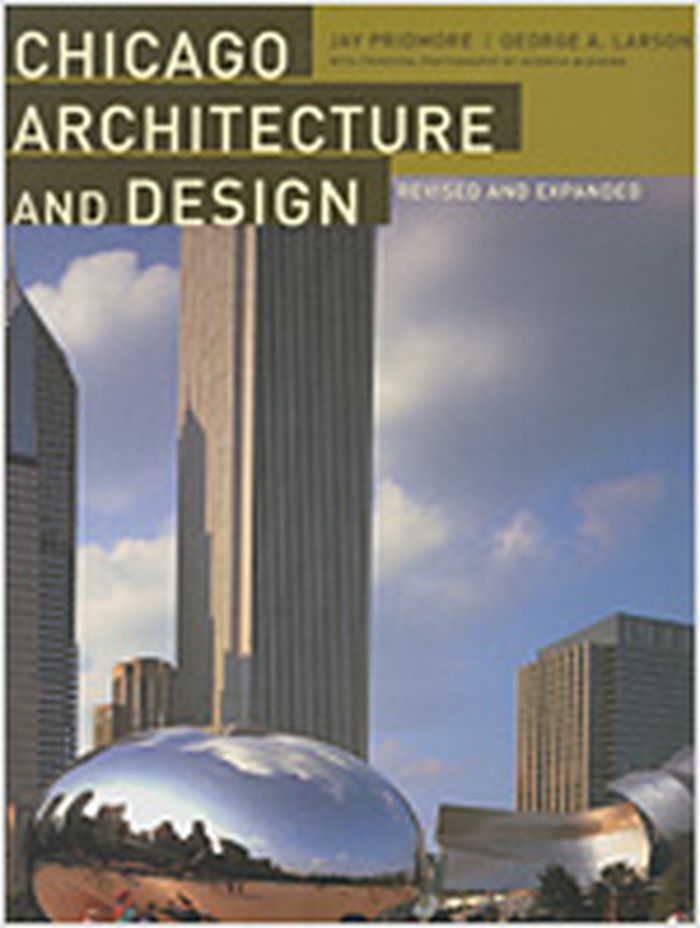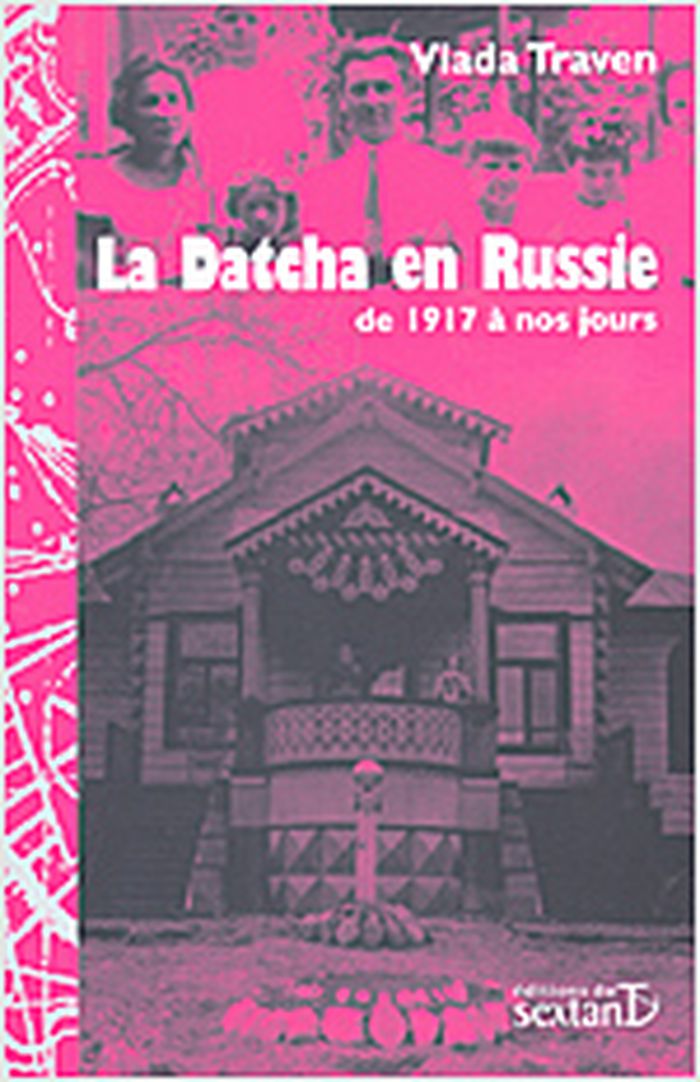$109.00
(available to order)
Summary:
Living archtecture presents this book with new photographs of some of the most significant Scandinavian private houses built during the twentieth century to elucidate the distinctive characterof Nordic architecture, and to bring attention to the individual house as one of the most distinguished architectural problems, masterlysolved by a number of brilliant Scandinavian architects.
Scandinavian modern houses : the spirit of nordic light, volume 1
Actions:
Price:
$109.00
(available to order)
Summary:
Living archtecture presents this book with new photographs of some of the most significant Scandinavian private houses built during the twentieth century to elucidate the distinctive characterof Nordic architecture, and to bring attention to the individual house as one of the most distinguished architectural problems, masterlysolved by a number of brilliant Scandinavian architects.
Architecture since 1900, Europe
Villas 50 en France
$109.95
(available in store)
Summary:
Alors que le design des années 50 connaît une vogue considérable et que l'architecture de la reconstruction a été très étudiée, les maisons particulières de cette époque restent méconnues. Réservée jusque-là à de grands bourgeois qui s'adressaient à des stars de la modernité comme Robert Mallet-Stevens, Pierre Chareau ou Le Corbusier, la villa connaît, avec l'émergence(...)
Architecture since 1900, Europe
April 2005, Paris
Villas 50 en France
Actions:
Price:
$109.95
(available in store)
Summary:
Alors que le design des années 50 connaît une vogue considérable et que l'architecture de la reconstruction a été très étudiée, les maisons particulières de cette époque restent méconnues. Réservée jusque-là à de grands bourgeois qui s'adressaient à des stars de la modernité comme Robert Mallet-Stevens, Pierre Chareau ou Le Corbusier, la villa connaît, avec l'émergence d'une bourgeoisie éclairée plus modeste, un essor remarquable dans la France de l'après-guerre. A l'ombre des grands ensembles, elle constitue une sorte de laboratoire qui permet aux architectes d'innover, mais aussi de mettre en pratique les acquis et les enseignements des maîtres, tout en les détournant et les adaptant, avec la vitalité et l'esprit de provocation caractéristiques de l'époque. Cette architecture domestique, à la fois expérimentale et matérialiste, souvent utopique, caricaturée par Jacques Tati ou Spirou, bénéficie de l'aide des Salons et des concours organisés par des magazines extraordinairement audacieux et inventifs. Montrant à quel point sa modernité se différencie du purisme théoricien qui prévalait avant la guerre, l'auteur Raphaëlle Saint-Pierre analyse dans la première partie de l'ouvrage le vocabulaire architectural français qui se met en place, nourri d'influences américaines, scandinaves, japonaises et brésiliennes, balançant entre organicisme, rationalisme, brutalisme et art total, sans déroger aux règles de fonctionnalité du plan, aux nouveaux impératifs d'équipement et au rapport, désormais indispensable, entre habitat et nature. Dans un second temps, la visite détaillée de vingt-cinq maisons, construites par les maîtres que sont Le Corbusier, André Lurçat, Alvar Aalto et Philip Johnson, par de jeunes architectes comme Claude Parent ou André Wogenscky, des ingénieurs et des artistes tels que Jean Prouvé, André Bloc et Pierre Soulages, nous fait découvrir la richesse de ce patrimoine architectural profondément original.
Architecture since 1900, Europe
Cités-jardins
$20.50
(available to order)
Summary:
Au lendemain de la première guerre mondiale, la reconstruction des villes sinistrées et la pénurie de logement constituent deux priorités du nouveau gouvernement belge d'union nationale. Des architectes et urbanistes réfugiés en Hollande ou en Angleterre ont mis à profit leur exil pour étudier les solutions urbanistiques appliquées dans ces pays et plus particulièrement(...)
Architecture since 1900, Europe
January 1900, Bruxelles
Cités-jardins
Actions:
Price:
$20.50
(available to order)
Summary:
Au lendemain de la première guerre mondiale, la reconstruction des villes sinistrées et la pénurie de logement constituent deux priorités du nouveau gouvernement belge d'union nationale. Des architectes et urbanistes réfugiés en Hollande ou en Angleterre ont mis à profit leur exil pour étudier les solutions urbanistiques appliquées dans ces pays et plus particulièrement les cités-jardins. En 1919, la Belgique crée la Société Nationale des Logements à Bon Marché qui coordonne les initiatives de coopératives constituées en vue d'édifier des cités-jardins.
Architecture since 1900, Europe
$24.95
(available to order)
Summary:
The Phaidon Atlas of Contemporary World Architecture: Travel Edition, presents all of the best works of architecture completed in the last five years in a convenient mini format. Each of the 1,052 projects from the comprehensive edition included a single image per building and a short text to describe it. The project entry gives the name of each building and its(...)
Architecture since 1900, Europe
May 2005, London
The Phaidon atlas of contemporary world architecture : travel edition
Actions:
Price:
$24.95
(available to order)
Summary:
The Phaidon Atlas of Contemporary World Architecture: Travel Edition, presents all of the best works of architecture completed in the last five years in a convenient mini format. Each of the 1,052 projects from the comprehensive edition included a single image per building and a short text to describe it. The project entry gives the name of each building and its architect, the location, address and contact details, and potential visiting hours. There is also a system to indicate which projects are open to the public. In addition to the forty two regional maps from the comprehensive edition, there are 27 new city maps which locate the buildings in more built up areas. The book provides a unique opportunity to visit 1,052 works of contemporary architecture in all parts of the world, from the Arctic Circle to African deserts. The Phaidon Atlas of Contemporary World Architecture, Travel Edition is an essential companion on the travels of all those interested in gaining a first hand understanding of contemporary architecture around the world.
Architecture since 1900, Europe
$90.95
(available to order)
Summary:
Encyclopedic in scope and structure, with architect-by architect entries arranged A–Z and specially commissioned photographs throughout of all the major extant buildings, from private houses and apartment blocks to schools and factories. Covers the work of Walter Gropius, Marcel Breuer, Eric Mendelsohn, Serge Chermayeff, Maxwell Fry, Ernö Goldfinger, Oliver Hill,(...)
Architecture since 1900, Europe
June 2005, London / New York
Modern : the modern movement in Britain
Actions:
Price:
$90.95
(available to order)
Summary:
Encyclopedic in scope and structure, with architect-by architect entries arranged A–Z and specially commissioned photographs throughout of all the major extant buildings, from private houses and apartment blocks to schools and factories. Covers the work of Walter Gropius, Marcel Breuer, Eric Mendelsohn, Serge Chermayeff, Maxwell Fry, Ernö Goldfinger, Oliver Hill, Berthold Lubetkin and others who changed the vocabulary of architecture in Britain between the wars. Photography by Morley von Sternberg.
Architecture since 1900, Europe
$69.00
(available to order)
Summary:
The birthplace of the skycraper, Chicago is famous for an architectural tradition that has influenced building around the globe. It is the craddle of modern architecture. It gae rise to the urban office building and the flowing, open floor plans of today's homes. This book chronicles Chicago's architectural tradition from the nineteenth through the early twenty-fisrt(...)
Architecture since 1900, Europe
January 1900, New York
Chicago architecture and design, revised and expanded
Actions:
Price:
$69.00
(available to order)
Summary:
The birthplace of the skycraper, Chicago is famous for an architectural tradition that has influenced building around the globe. It is the craddle of modern architecture. It gae rise to the urban office building and the flowing, open floor plans of today's homes. This book chronicles Chicago's architectural tradition from the nineteenth through the early twenty-fisrt century : from the structural simplicity of Chicago School commercial building to the low-slung Prairie School house, from the streamlined Art Deco skycraper to the minimalist Miesian tower of glass and steel, all the way through the strikingly original, diverse designs of the present day's so-called second modern period.
Architecture since 1900, Europe
$34.95
(available to order)
Summary:
Des premières lois des Soviets à sa libéralisation totale dans les années 1990, la datcha, maison de campagne du citadin russe, va vivre une histoire pleine de bruit et de fureur. Bourgeoise, ni urbaine, ni rurale, individuelle, oisive, la datcha cristallise les contradictions entre l'idéologie du régime et les aspirations du citoyen. Car c'est la société soviétique(...)
La datcha en Russie de 1917 à nos jours
Actions:
Price:
$34.95
(available to order)
Summary:
Des premières lois des Soviets à sa libéralisation totale dans les années 1990, la datcha, maison de campagne du citadin russe, va vivre une histoire pleine de bruit et de fureur. Bourgeoise, ni urbaine, ni rurale, individuelle, oisive, la datcha cristallise les contradictions entre l'idéologie du régime et les aspirations du citoyen. Car c'est la société soviétique ordinaire, en perpétuelle situation d'expérimentation dans un contexte de pénurie chronique, que l'on observe ici tout au long du vingtième siècle. Où l'on voit comment la datcha se faufile dans les interstices du collectivisme totalitaire, concrétisant un espace de survie et de liberté pour les citoyens.
Architecture since 1900, Europe
$64.95
(available to order)
Summary:
Des projets réalisés par Jean Nouvel, Norman Foster, Zaha Hadid, Frank O. Gehry, Eric Owen Moss, Dominique Perrault, Murphy/Jahn, Mecanoo, Tadao Ando, Shigeru Ban, Toyo Ito, Fumihiko Maki, Kenzo Tange, César Pelli et Enric Miralles. Avec plus de 2500 illustrations et plans.
Architecture since 1900, Europe
February 2005, Barcelona
Atlas : architecture contemporaine 1.0
Actions:
Price:
$64.95
(available to order)
Summary:
Des projets réalisés par Jean Nouvel, Norman Foster, Zaha Hadid, Frank O. Gehry, Eric Owen Moss, Dominique Perrault, Murphy/Jahn, Mecanoo, Tadao Ando, Shigeru Ban, Toyo Ito, Fumihiko Maki, Kenzo Tange, César Pelli et Enric Miralles. Avec plus de 2500 illustrations et plans.
Architecture since 1900, Europe
books
$39.95
(available to order)
Summary:
"Sessions" features work by Hernan Diaz-Alonso, Marcelo Spina, Marta Malé-Alemany, George Yu, and Benjamin Bratton.
Architecture since 1900, Europe
March 2005, Los Angeles
books
$38.95
(available to order)
Summary:
The Netherlands Architecture Institute (NAI) awarded the first NAI Prize in 2002. It was awarded to the best building realized during the last two years by an architects under 40 years of age. the NAI will once again be awarding the prize under the title AM-NAI Prize 2004. Fresher Facts presents the four nominated projects in detail and explains the context in which these(...)
Architecture since 1900, Europe
March 2005, Rotterdam
Fresher facts : the best buildings by young architects in the Netherlands
Actions:
Price:
$38.95
(available to order)
Summary:
The Netherlands Architecture Institute (NAI) awarded the first NAI Prize in 2002. It was awarded to the best building realized during the last two years by an architects under 40 years of age. the NAI will once again be awarding the prize under the title AM-NAI Prize 2004. Fresher Facts presents the four nominated projects in detail and explains the context in which these four buildings were created.
books
March 2005, Rotterdam
Architecture since 1900, Europe
